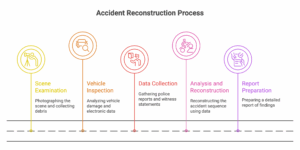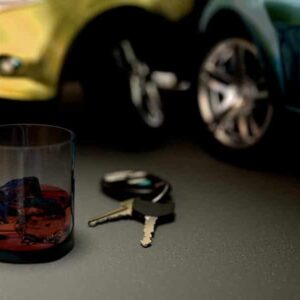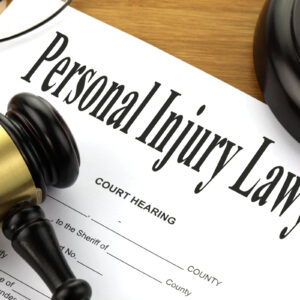Car crashes. They happen in a split second, leaving behind a mess of metal, confusion, and often, serious injuries. Figuring out exactly what happened – who was at fault, what factors contributed, and how it could have been prevented – can be incredibly complex. That’s where accident reconstruction experts come in. They are the detectives of the road, piecing together the puzzle to uncover the truth behind the collision.
The Role of Accident Reconstruction Experts in Unveiling the Truth
Imagine a multi-car pileup on a foggy highway. Witness accounts are conflicting, and physical evidence is scattered. Who caused the initial collision? Was speed a factor? Did mechanical failure play a role? Accident reconstruction experts are trained to answer these questions. They meticulously analyze the scene, the vehicles, and any available data to determine the sequence of events leading up to the crash. Their findings are crucial for legal proceedings, insurance claims, and even improving road safety. These experts act as objective investigators, removing the emotional bias and focusing solely on the scientific and engineering principles that explain the crash.
Understanding the Science Behind Collision Reconstruction
Collision reconstruction isn’t just guesswork; it’s a rigorous application of physics, engineering, and forensic science. Experts use principles of mechanics, such as momentum, energy, and friction, to calculate vehicle speeds, impact angles, and the forces involved in the collision. They analyze skid marks to determine braking patterns, examine vehicle damage to understand the direction and severity of impact, and consider factors like road conditions, weather, and visibility.
To become a qualified collision reconstructionist typically requires a bachelor’s degree in engineering (mechanical, civil, or automotive are common), physics, or a related field. Further specialized training is essential, often involving certification programs offered by organizations like the Accreditation Commission for Traffic Accident Reconstruction (ACTAR). These certifications demonstrate a commitment to professional standards and require ongoing education to stay current with advancements in the field. Many experts also hold professional engineering licenses, further validating their expertise.
The Process: From Scene Investigation to Data Analysis
The accident reconstruction process is methodical and thorough. It typically involves several key stages:
- Scene Examination: This includes photographing the scene, measuring skid marks and vehicle positions, documenting road conditions, and collecting debris.
- Vehicle Inspection: Experts meticulously examine the vehicles involved, documenting damage, identifying mechanical failures, and analyzing electronic data from the vehicle’s event data recorder (EDR), often referred to as the “black box.”
- Data Collection: Gathering police reports, witness statements, medical records, and any other relevant information.
- Analysis and Reconstruction: Using the collected data and scientific principles, the expert reconstructs the sequence of events leading to the crash. This often involves computer simulations and mathematical calculations.
- Report Preparation: The expert prepares a detailed report outlining their findings, methodology, and conclusions.

Key Elements Analyzed in Accident Reconstruction
Several key elements are carefully analyzed to reconstruct the events of a crash:
- Vehicle Dynamics: This includes factors like speed, acceleration, deceleration, and trajectory.
- Impact Analysis: Determining the point of impact, the angle of impact, and the forces involved.
- Human Factors: Examining driver behavior, such as reaction time, perception, and impairment (e.g., alcohol or drug use).
- Environmental Factors: Assessing the impact of weather conditions, road conditions, and visibility.
- Mechanical Factors: Identifying any mechanical failures that may have contributed to the crash, such as brake failure or tire blowout.
The Importance of Technology in Modern Accident Reconstruction
Technology plays an increasingly vital role in modern accident reconstruction.
- 3D Scanning: Laser scanners and photogrammetry (creating 3D models from photographs) capture detailed measurements of the accident scene and vehicle damage, preserving the evidence in a virtual environment. This allows experts to revisit the scene remotely and perform detailed analysis.
- Event Data Recorders (EDRs): These “black boxes” record valuable data, such as vehicle speed, braking force, and airbag deployment, providing critical insights into the moments leading up to the crash.
- Simulation Software: Computer programs simulate the collision dynamics, allowing experts to test different scenarios and validate their hypotheses.
- Drones: Aerial photography and videography provide a bird’s-eye view of the accident scene, capturing valuable information about the overall layout and surrounding environment.
Forensic engineers often play a crucial role by providing specialized expertise in areas like mechanical failure analysis or materials testing. For example, a forensic engineer might examine a failed brake component to determine if a manufacturing defect contributed to the accident. While collision reconstruction experts focus on the overall sequence of events, forensic engineers often delve into the specific technical aspects of vehicle components.
How Accident Reconstruction Experts Present Their Findings
Accident reconstruction experts present their findings in a clear and concise manner, often using visual aids such as diagrams, animations, and 3D models. Their reports are meticulously documented and based on scientific evidence. They may also testify in court, explaining their methodology and conclusions to a judge and jury. The admissibility of their testimony can vary depending on the jurisdiction and the specific rules of evidence. Generally, the expert must demonstrate that their methods are scientifically valid and reliably applied to the facts of the case.
The Impact of Accident Reconstruction on Legal Cases and Safety Improvements
Accident reconstruction findings have a significant impact on legal cases, helping to determine liability in personal injury lawsuits, insurance claims, and criminal proceedings. The cost of hiring an expert can range from a few thousand dollars for a simple analysis to tens of thousands of dollars for a complex reconstruction. This expense often reflects the extensive time, specialized equipment, and expertise required to conduct a thorough investigation.
Beyond legal applications, accident reconstruction plays a crucial role in improving road safety. By identifying the factors that contribute to crashes, these experts help inform the design of safer vehicles, roads, and traffic regulations. For example, analyzing accident data can reveal trends related to distracted driving, leading to stricter laws and public awareness campaigns. Similarly, identifying hazardous road design features can prompt changes to improve visibility or reduce the risk of collisions. In 2021, the National Highway Traffic Safety Administration (NHTSA) estimated that over 42,915 people died in motor vehicle traffic crashes, a stark reminder of the need for ongoing efforts to understand and prevent accidents. Accident reconstruction helps us learn from these tragedies and build a safer transportation system for everyone.





I enjoy studying and I think this website got some genuinely utilitarian stuff on it! .